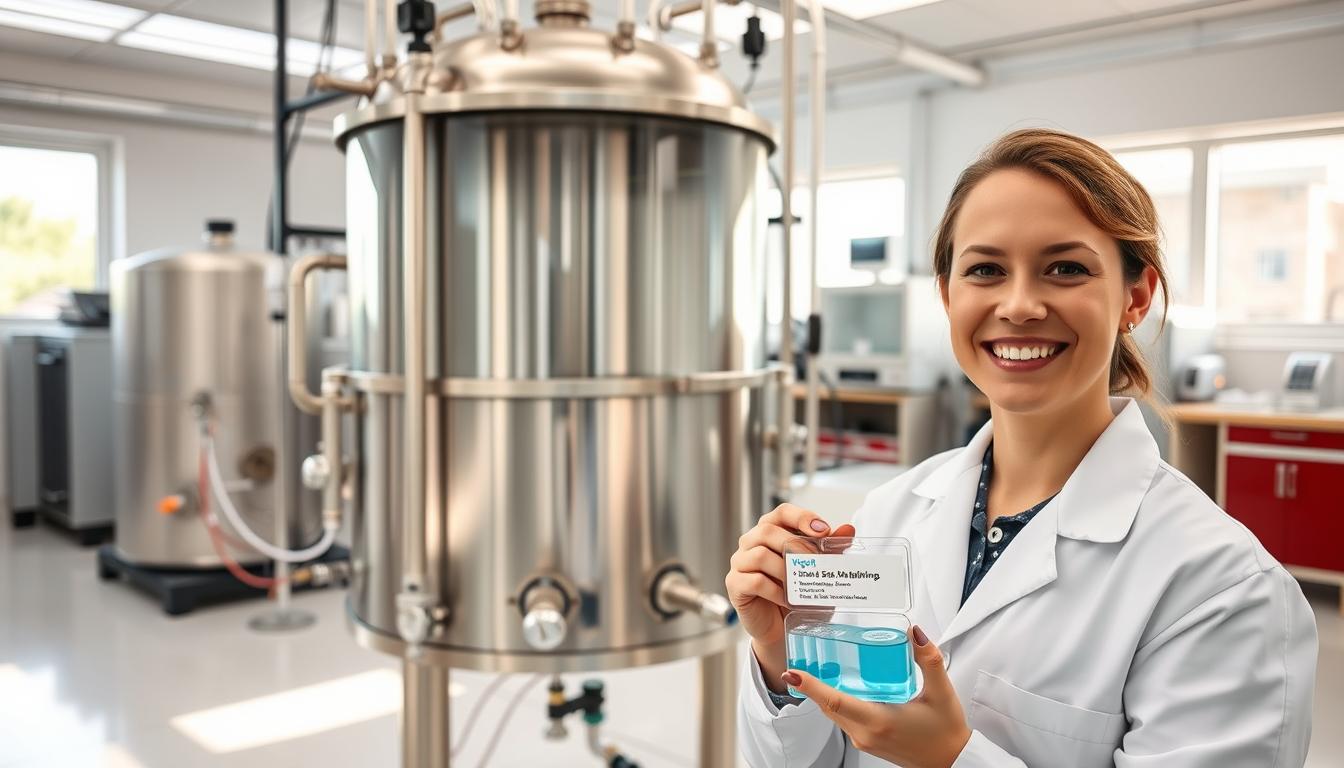Discover the benefits of Centralised Anaerobic Digestion Facilities and how they support Community Biogas Plants. Learn about CAD Plants and Farm AD Plant Cooperatives.
Centralised anaerobic digestion facilities play a crucial role in supporting community biogas plants by providing sustainable solutions for waste management and renewable energy production. These facilities, also known as CAD Plants, are centralized plants that process organic waste to produce biogas for energy generation.
Benefits of Centralised Anaerobic Digestion Facilities
One of the key benefits of CAD Plants is the reduction of greenhouse gas emissions through the conversion of organic waste into renewable energy. By utilizing anaerobic digestion technology, these facilities help mitigate climate change and promote environmental sustainability.
In addition to environmental benefits, CAD Plants offer economic advantages for communities by reducing waste management costs, creating job opportunities, and generating revenue through the sale of biogas and digestate.
How Centralised Anaerobic Digestion Facilities Support Community Biogas Plants
CAD Plants support community biogas projects by fostering collaboration among multiple stakeholders, including local governments, businesses, and residents. Through the establishment of AD Plant Cooperatives, communities can share resources and infrastructure to increase efficiency in biogas production and maximize the benefits of anaerobic digestion.
This type of biogas plant is also referred to as a CAD plant.
CAD plants characterised for design purposes as very flexible plants capable of processing a wide variety of feed stocks. However, they are invariably at their core a manure treatment plant based design, and agricultural.
CAD Plants: Key Takeaway
Centralised anaerobic digestion plants, are a great idea, because they allow the pooling of resources to achieve multiple aims. These include not just for the #biogas plant operator to make a profit from a successful energy (biogas production) business, but also to sanitise waste for the health of a community, but also reduce water pollution, control odours, and more. The concept originated in Denmark, where they possibly still have highest number of plants.
How Centralised Anaerobic Digestion Facilities Work
In the most common application of CAD, several farms co-operate to treat their phone animal wastes in the single facility. It is not uncommon for local industrial and municipal wastes, also to be accepted and as a rule of thumb these may be taken as feed materials providing no more than 10 per cent of the total input material. This 10 percent can be viewed as an additional revenue because a gate fee will be charged. As long as the imported materials remain below 10%, any contamination will be unlikely to affect significantly the quality of the output as digestate, in reality.
However, unfortunately this commonsense approach to allowing the output to be used as fertilizer by the farms within a co-operative, may be impeded by difficult to comprehend and apparently unnecessary rules applicable in many European countries at the current time. Notwithstanding this difficulty, which will hopefully be resolved in the not too distant future, by a reclassification of many so-called waste materials.
Given, that as we said earlier, CAD plants are at their core based around agricultural waste treatment, it is not surprising that characteristically they are almost all based upon tried and tested manure digestion technology. By this, it means that they are low solids, mesophilic temperature range, type plants. They are designed around the water contents of a typical slurry from farms. This technology also happens to be very similar to the sewage sludge treatment biogas plant design. These designs are some of the earliest and most thoroughly proven which are available within the AD industry. Many contractors offer these types of plants, so this market is highly competitive and good value should be achievable from the best contractors who are active in supplying this type of biogas plant.
For CAD plants to be run successfully, really proactive management is necessary to ensure that the right next of different feedstocks are continually being delivered to the plant, not only by the other members of the co-operative, but also by those organisations also contributing organic MSW, and industrial or commercial organic waste. Providing that this balancing act, is achievable given seasonal fluctuations, the nature of holidays in tourist areas, and the need for continuation of feedstock supply in times when there may be growing competition for feedstocks, this is a good business plan.

Biogas Generation Rates from CAD Facilities
The biogas generation rates from CAD facilities in reality varies as much as the feedstock does. Estimates are hard to come by, but the publication titled; “Biological techniques in solid Waste management and land remediation”, published by the Chartered Institution of Wastes Management, 2009, CIWM Business Services Limited, Northampton, UK, WWW.CIWM.CO.UK, suggests typical rates.
Using data from Denmark an average generation rate of 37 m3/m3 has been calculated. That sounds quite definitive, but in reality spread of biogas yields is large and varies from 23 to 90 cubic metres of biogas per cubic metre of feedstock. If these plants are operating on manure alone it is suggested that the yield in biogas would be something like 20 cubic metres of biogas cubic metre of feedstock. From that it can be assumed that the highest yields will be those from the CAD plants which are excepting highly calorific feedstocks in the form of the wastes such as household food waste.
In the examples used here, and based on experience from Denmark, the viability of these #anaerobic digestion plants is heavily dependent upon them using the organic waste from their own farms and as the consumers of the output digestate.
These plants would not generally be economically viable if they were not able to use their own co-operative’s digestate and fertiliser, and simultaneously had the cost of digestate treatment to finance. The savings from their reduced need to buy fossil fuel based chemical fertiliser are significant, while they also receive income from sale of their renewable energy production.
Of course, this should not be allowed to detract from the fact that they produce biogas which is every bit as good as that produced by other types of processes other than anaerobic digestion plants. It can be used for heating the farms, schools and other facilities in the locality. It can raise steam for food processing/ bottling plants, generate electricity for off-grid locations, and provide vehicle fuel for farm vehicles and local transport.
Very few people would not agree that there is a bright future for #centralised anaerobic digestion plants and energy costs rise, as they surely will.

Frequently Asked Questions About Centralised Anaerobic Digestion Facilities
What is a Centralised Anaerobic Digestion Facility?
A CAD Facility is a centralized plant that takes its organic feed from more than one farm and processes organic waste to produce biogas for energy generation.
How do CAD Plants benefit the environment?
CAD Plants help reduce greenhouse gas emissions by converting organic waste into renewable energy for a number of farms and by so doing they allow economies of scale resulting in more effiicent renewable energy production.
What is the role of AD Plant Cooperatives in community biogas projects?
AD Plant Cooperatives are groups of stakeholders who collaborate to operate and manage anaerobic digestion facilities for mutual benefit.
How can communities benefit from Centralised Anaerobic Digestion Facilities?
Communities can benefit from CAD Plants through reduced waste management costs, job creation, and sustainable energy production.
Are CAD Plants cost-effective for communities?
Yes, CAD Plants can be cost-effective in the long run, as they provide a sustainable solution for waste management and energy production.
How can communities get involved in supporting Centralised Anaerobic Digestion Facilities?
Communities can support CAD Plants by participating in AD Plant Cooperatives, advocating for sustainable waste management practices, and investing in renewable energy projects.
What are the future prospects for Centralised Anaerobic Digestion Facilities?
The future looks promising for CAD Plants, as more communities recognize the benefits of anaerobic digestion for sustainable development.





Leave a Reply